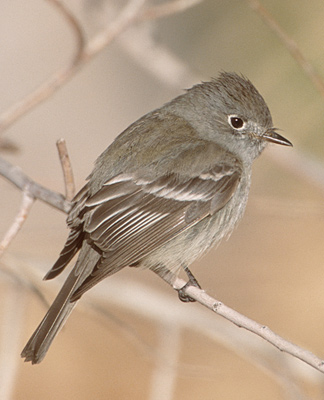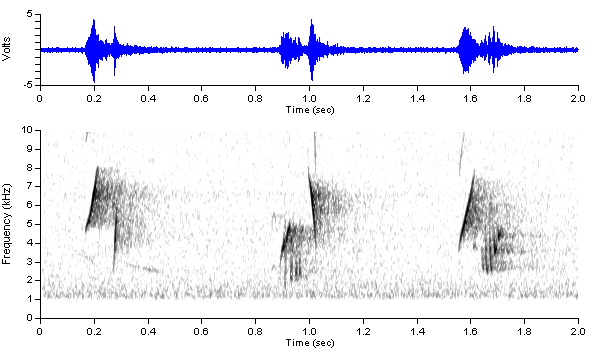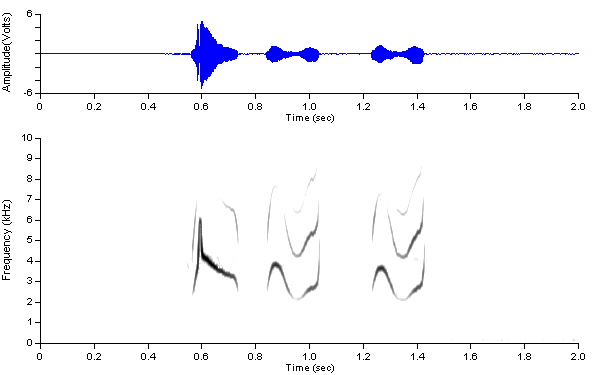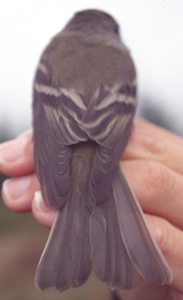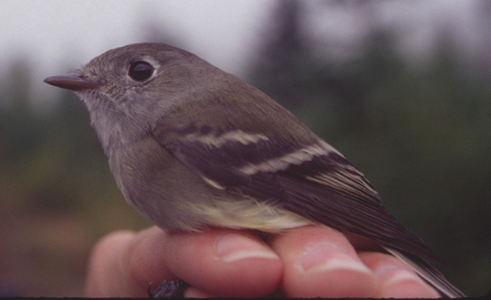|
| Range and Habitat in PNW: Conifer forests, mostly east of the Cascade crest. Range worldwide: Breeding: Conifer and mixed forests of western North America from Alaska to New Mexico. Winter: Mexico. Similar-looking Species: All Empidonax flycatchers, especially Dusky and Least. Voice: Song: Three phrases, presented in random order. Note: "pip". Various calls. Similar-sounding Species: Dusky Flycatcher, Least Flycatcher. Hammond's song has two "harsh, guttural" phrase-types; Dusky only one. Not much attention has been devoted by field guides to distinguishing Least and Hammond's Flycatchers, because they are largely allopatric, but they do have overlapping ranges in the PNW, and Least may be expanding. They appear to be each other's closest relatives. Care should be taken not to mistake the third phrase of the Hammond's song, which is given singly during mid-summer, with the "che-bec" of the Least, which is usually repeated again and again. All Empidonax spp. likely to be confused with Hammond's have "whit" note, different from "pip" of Hammond's. |
|
2. "Pip" Note; "Whezee" Call
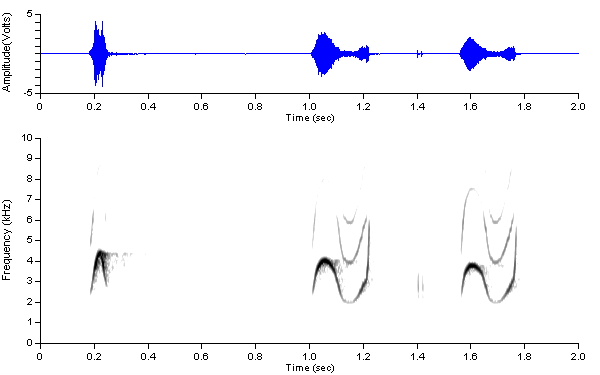
Recording © BLB
|
|
|
|
All recordings presented here are the property of the recordists and are used with permission. The name of the recordist appears below each spectrogram.
Spectrograms and webpages are the property of AppliedBioacoustics. © 2004 AppliedBioacoustics.com
